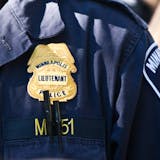Keenan Hartert has heard people say college students just need to get a job to work their way through college.
He’s found it’s not that simple.
The Minnesota State University Mankato professor noticed that some students who seemed engaged in class bombed tests, in part because of trying to balance full course loads with working more than 20 hours a week — whether on overnight hospital shifts or managing a Kwik Trip.
“I was floored at how normal they thought ... working 30 hours or more was,” he said.
Hartert began researching his students’ schedules, making connections between their hours worked and class performance.
He found that students who work more than 20 hours a week do significantly worse on tests and come to class less often; half of those low-attending students ended up failing his class, compared with just 7% of high-attending students.
From Mankato to Duluth, many Minnesota college students face the reality of having to work through college. As tuition at public and private institutions continues to rise and student aid stagnates, student loan debt and associated anxiety have ballooned.
The result? A majority of college students — the U.S. Bureau of Labor Statistics says 64% of part- or full-time students — are employed, leading to students having to balance studying, campus life and working.


